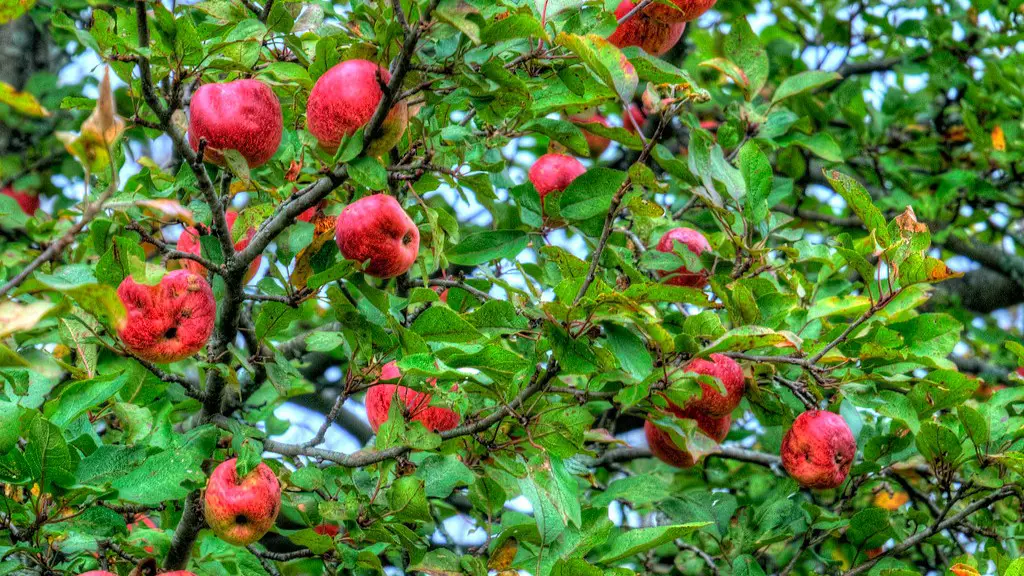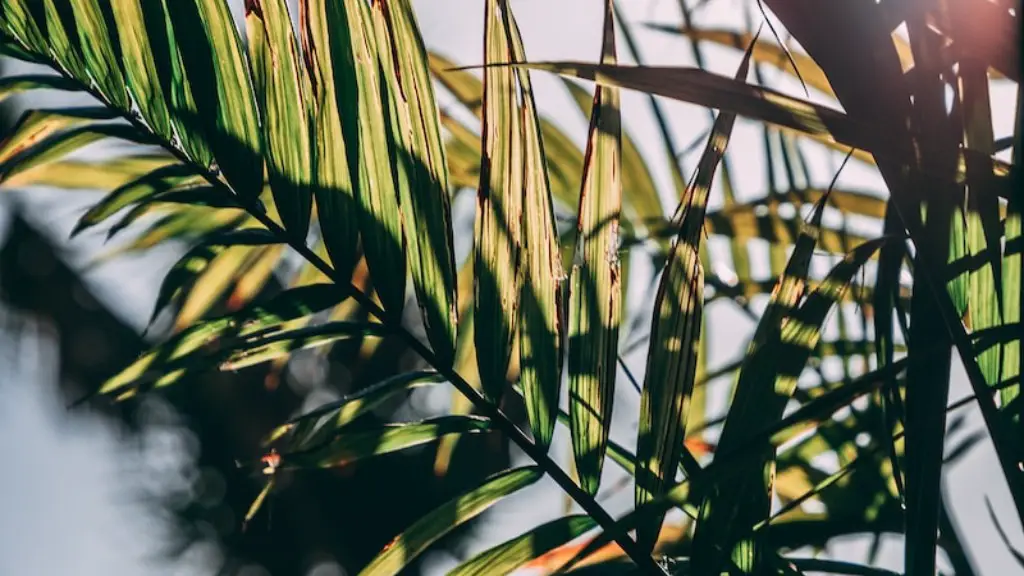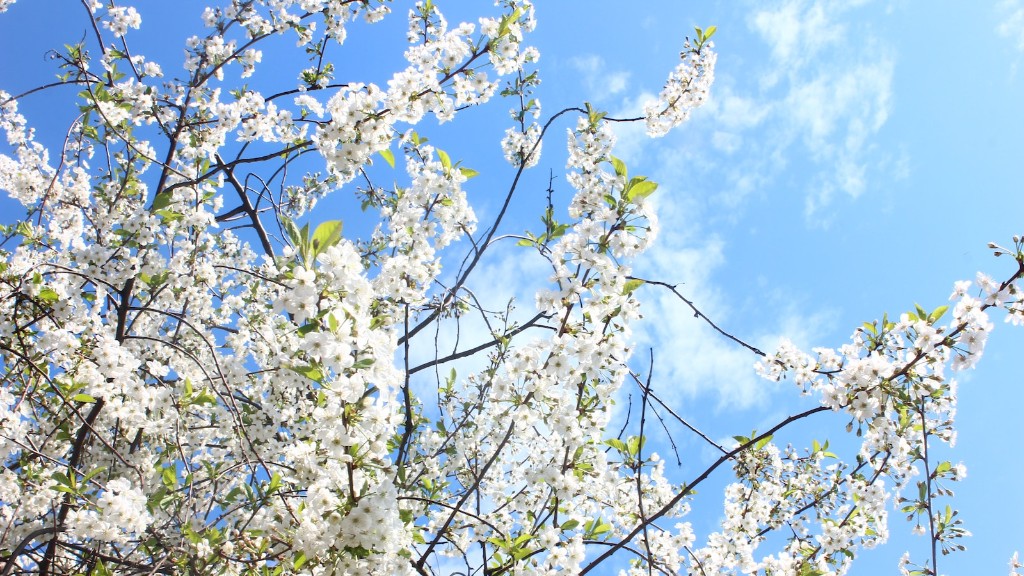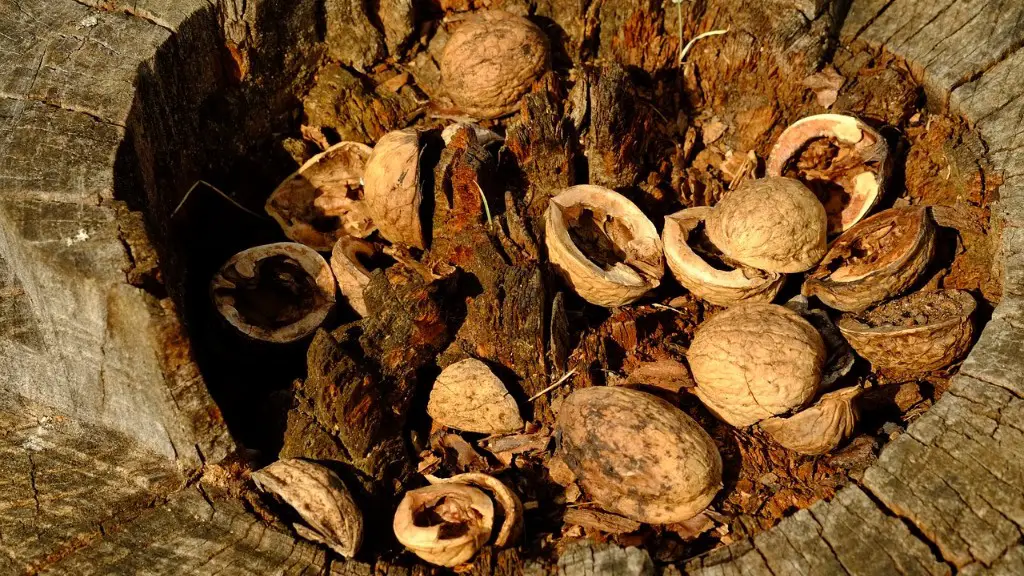Pruning apple trees is an important step in maintaining their health and productivity. It can be done either by hand or through mechanical pruners. Hand pruning is more labor intensive, but it allows for more precise control of the cuts and it can be easier to work around difficult branches. There are a few simple rules to follow when pruning an apple tree to ensure maximum benefits.
First, removing dead, damaged or diseased branches is the most important step. This helps prevent the spread of disease, improves airflow and allows more sunlight penetration. It also promotes healthier, more vigorous growth.
Next, thinning out dense areas of the tree’s branches can increase its overall vigor and fruitfulness. This involves removing some of the smaller branches, leaving larger branches to develop more fruit. To ensure proper thinning, it’s important to choose branches evenly throughout the tree’s canopy.
Third, shortening the length of some of the branches can also help increase fruit production and encourage better branching. Making the cuts at the appropriate height is essential so as to not damage younger shoots and encourage more flowering.
Fourth, apple trees may produce more fruit if the height of the tree is kept lower. This is so that more light can reach the lower branches and fruits, which will encourage a better harvest. Limiting the height to two metres can help achieve this.
Lastly, pruning during the winter season can help encourage healthy growth the following spring. Removing excess growth can improve airflow and also help potentially protect against cold weather.
Types of Cuts
There are a few main types of cuts used when pruning an apple tree, depending on the desired outcome. Removing a branch completely is referred to as ‘heading back’, and is used when the branch is too large for thinning. ‘Thinning’ involves removing branches from the inside of the tree’s canopy, and ‘elevating’ involves raising the height of the tree’s canopy.
For large cuts, like those when heading back, it’s important to choose the right branch. Remove branches that are weak, crossed, crowded, damaged and/or diseased, but also those that don’t evenly distribute across the tree. Leaving a nice, even canopy is essential for proper fruit production.
When thinning or elevating, the cuts should be made at the branch’s collar. This is the area just above where the branch attaches to the main branch or trunk. Making this cut at the right location helps protect the tree’s health and encourages optimum growth. It also helps to avoid leaving long, stubby branches.
When making any type of cut, it’s important to use the right type of blade. A sharp blade helps make cleaner cuts, minimizing the risk of damaging the tree and protecting against disease.
Timing and Frequency
Pruning should only be done when a tree is dormant or as experience dictates it needs attention. The season of pruning should fit the schedule of the apple tree, and trees may need to be pruned more often in climates with longer growing seasons. Some calculations can be done in order to determine the best time to prune your apple tree.
Additionally, the frequency of pruning depends on the mature tree’s size, age, type and condition. Thinning out the tree may be necessary every two to three years, while heavy pruning may be needed every five to seven years. Only thinning and elevating should be done every year to encourage healthy, productive growth.
Safety Considerations
When pruning an apple tree, it’s important to take safety considerations into account. First of all, it’s essential to have the right attire – gloves, long pants, and closed-toe shoes. It’s also a good idea to use a ladder when necessary, and make sure to wear a hardhat to protect from falling debris.
Additionally, it’s important for pruners to understand some of the common tree hazards. Make sure to look for included bark or weaknesses in the branches, as well as leaning, dead or rotting trees, which are more likely to fail during a storm.
Finally, while using tools like pruning shears or saws, it’s essential to use caution. Make sure to read any instructions that come with the tools and never leave them unattended while in use. It’s also a good idea to use a pair of tree pruner’s gloves, which protect hands from cuts and irritation.
Maintenance
In addition to pruning, caring for an apple tree involves regular maintenance. Watering the trees frequently is important for keeping them healthy and productive. Mulching the tree helps to maintain soil moisture and can also keep fertilizer from washing away. Fertilizer can also be used once or twice a year to increase nutrient levels.
The trees should also be inspected on a regular basis, looking out for pest and disease problems. If any are found, they should be treated right away to help protect the tree and prevent diseases from spreading. Lastly, keeping the area around the tree clean, removing any weeds or debris, helps ensure maximum growth and health as well.
Varieties to Consider
When selecting an apple tree for your garden, it’s important to consider the many different varieties available. For example, Red Delicious and Golden Delicious are popular varieties with a sweet taste, while Granny Smith and Jonathan apples are tart and crisp. Different types of apples may grow better in certain climates and soil conditions, so doing some research can help ensure the best selection.
Some apples may also need to be cross-pollinated in order to produce fruit, meaning more than one type of apple tree may be required. Knowing which varieties are compatible is another factor to consider when planning an apple tree orchard.
Additionally, dwarf apple trees can be a great option for small spaces, while semi-dwarf varieties are a good compromise between size and fruit production. It’s also possible to buy grafted apple trees, which may be able to produce fruit faster than budding or planting from seed.
Conclusion
Pruning apple trees can help keep them healthy and productive, while also improving the overall fruit production. There are various techniques and cuts to employ, as well as different types of apple trees to choose from. With the right techniques and knowledge, pruning can be done safely and efficiently.




